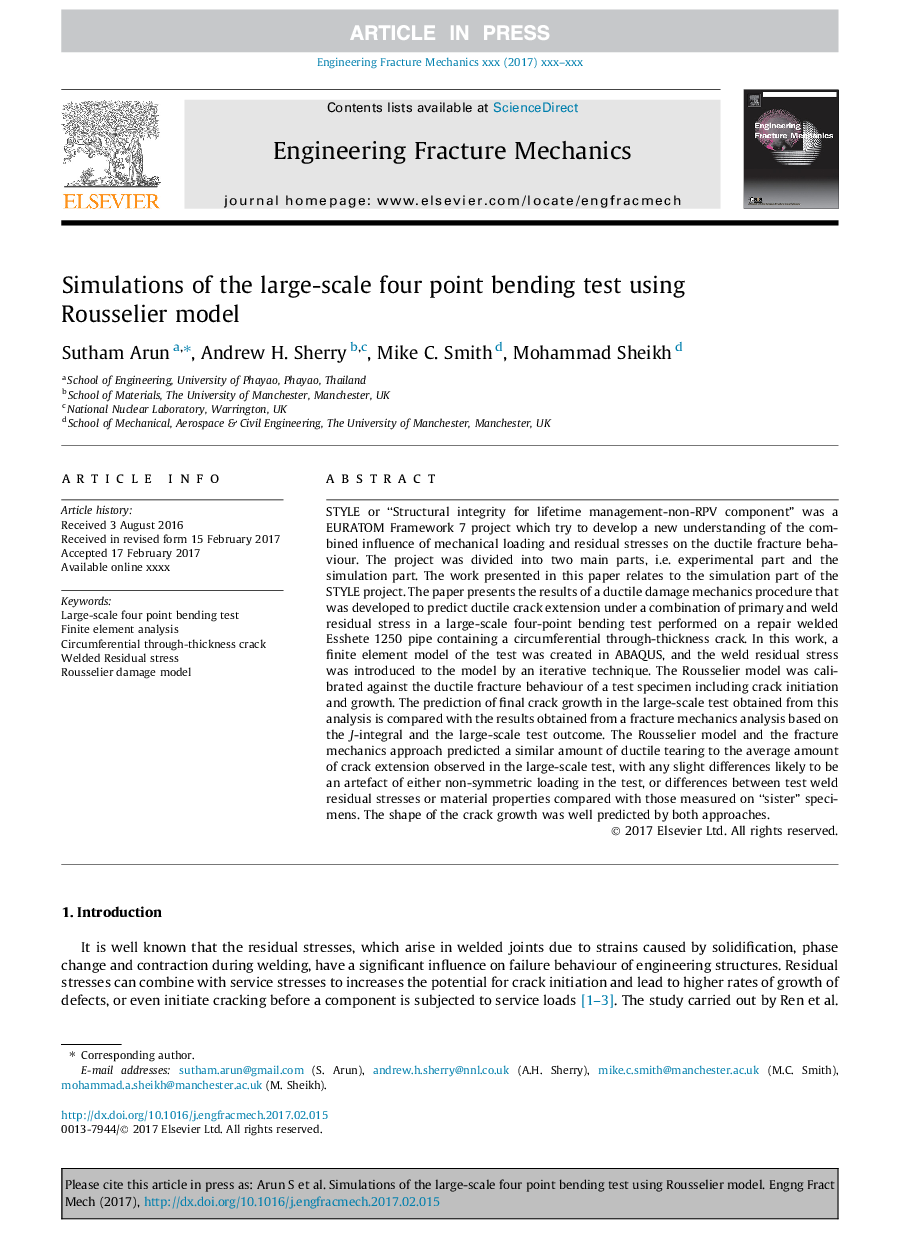| کد مقاله | کد نشریه | سال انتشار | مقاله انگلیسی | نسخه تمام متن |
|---|---|---|---|---|
| 5014047 | 1463051 | 2017 | 15 صفحه PDF | دانلود رایگان |
عنوان انگلیسی مقاله ISI
Simulations of the large-scale four point bending test using Rousselier model
ترجمه فارسی عنوان
شبیه سازی تست خمش چهار نقطه در مقیاس بزرگ با استفاده از مدل روسللر
دانلود مقاله + سفارش ترجمه
دانلود مقاله ISI انگلیسی
رایگان برای ایرانیان
کلمات کلیدی
تست خمش چهار نقطه در مقیاس بزرگ، تجزیه و تحلیل عنصر محدود، ضخامت از طریق ضخامت استرس باقی مانده جوش مدل آسیب روسللی،
موضوعات مرتبط
مهندسی و علوم پایه
سایر رشته های مهندسی
مهندسی مکانیک
چکیده انگلیسی
STYLE or “Structural integrity for lifetime management-non-RPV component” was a EURATOM Framework 7 project which try to develop a new understanding of the combined influence of mechanical loading and residual stresses on the ductile fracture behaviour. The project was divided into two main parts, i.e. experimental part and the simulation part. The work presented in this paper relates to the simulation part of the STYLE project. The paper presents the results of a ductile damage mechanics procedure that was developed to predict ductile crack extension under a combination of primary and weld residual stress in a large-scale four-point bending test performed on a repair welded Esshete 1250 pipe containing a circumferential through-thickness crack. In this work, a finite element model of the test was created in ABAQUS, and the weld residual stress was introduced to the model by an iterative technique. The Rousselier model was calibrated against the ductile fracture behaviour of a test specimen including crack initiation and growth. The prediction of final crack growth in the large-scale test obtained from this analysis is compared with the results obtained from a fracture mechanics analysis based on the J-integral and the large-scale test outcome. The Rousselier model and the fracture mechanics approach predicted a similar amount of ductile tearing to the average amount of crack extension observed in the large-scale test, with any slight differences likely to be an artefact of either non-symmetric loading in the test, or differences between test weld residual stresses or material properties compared with those measured on “sister” specimens. The shape of the crack growth was well predicted by both approaches.
ناشر
Database: Elsevier - ScienceDirect (ساینس دایرکت)
Journal: Engineering Fracture Mechanics - Volume 178, 1 June 2017, Pages 497-511
Journal: Engineering Fracture Mechanics - Volume 178, 1 June 2017, Pages 497-511
نویسندگان
Sutham Arun, Andrew H. Sherry, Mike C. Smith, Mohammad Sheikh,
